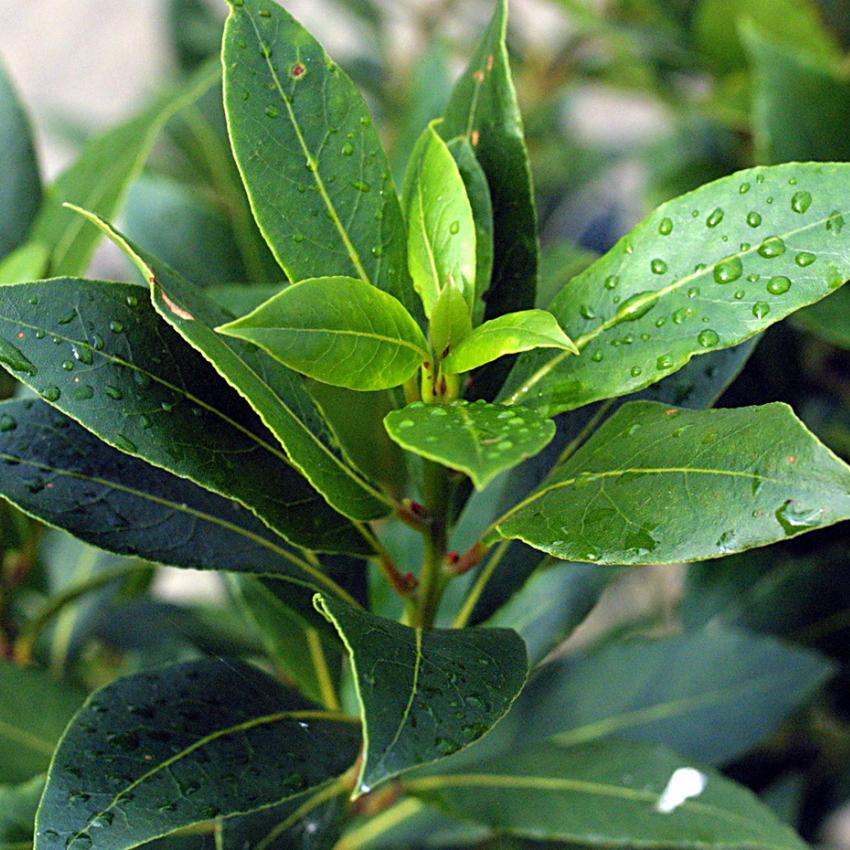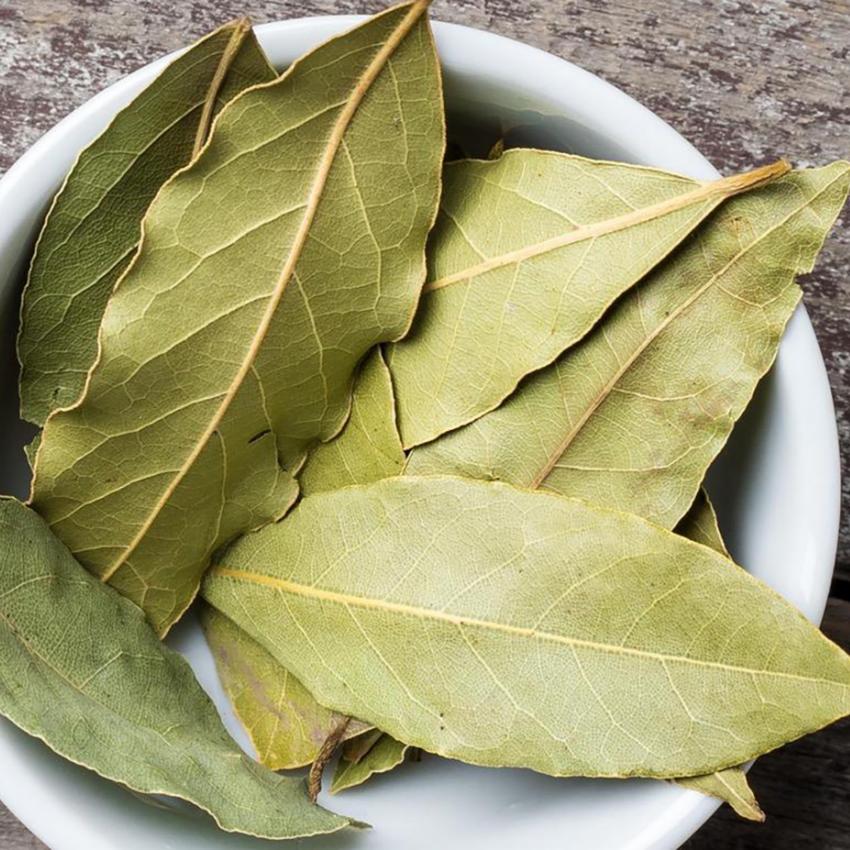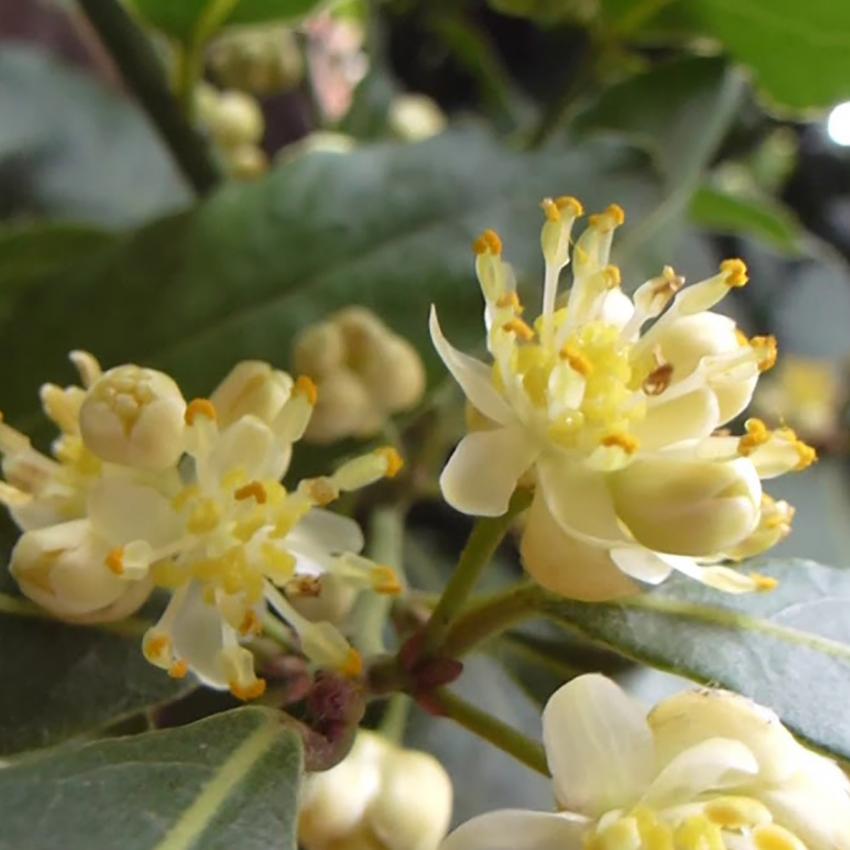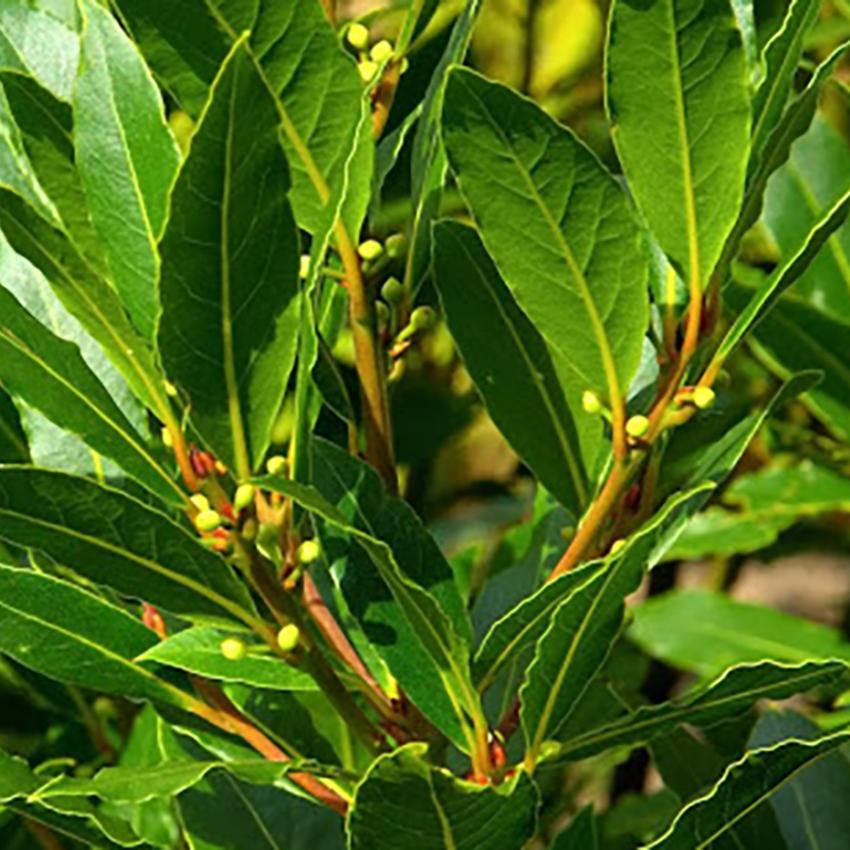



Bay Leaves
Laurus nobilis
The bay leaf is an aromatic leaf commonly used in cooking. It can be used whole, or dried and ground.
Bay leaves were used for flavouring by the ancient Greeks. They are a fixture in the cooking of many European cuisines (particularly the Mediterranean), as well as in the Americas. They are used in soups, stews, meat, seafood, vegetable dishes, and sauces. The leaves also flavour many classic French dishes. The leaves are most often used whole (sometimes in a bouquet garni) and removed before serving (they can be abrasive in the digestive tract). Thai and Laotian cuisine employs bay leaf in a few Arab-influenced dishes, notably massaman curry. In the Philippines, dried bay laurel leaves are used in several dishes such as menudo, beef pares, and adobo. Bay leaves are also used in the making of jerk chicken in the Caribbean Islands. The bay leaves are soaked and placed on the cool side of the grill. Pimento sticks are placed on top of the leaves and the chicken is placed on top and smoked. Bay leaves can also be crushed or ground before cooking. Crushed bay leaves impart more fragrance than whole leaves, but are more difficult to remove, and thus they are often used in a muslin bag or tea infuser.
Bay leaves can also be scattered in a pantry to repel meal moths, flies, cockroaches, mice and silverfish.
